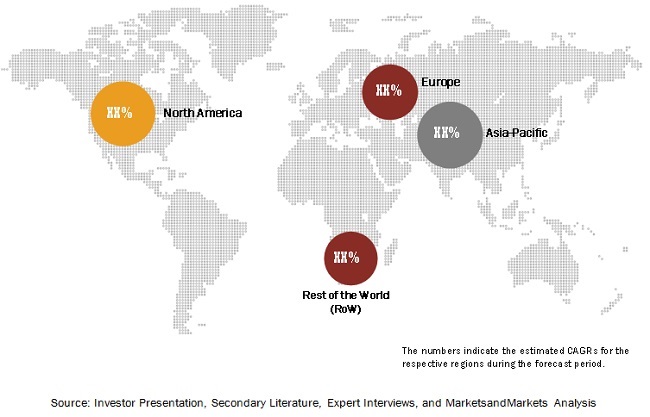The 3D printed equipment segment is expected to grow at the highest rate during the forecast period
On the basis of components, the 3D printing medical devices market is segmented into software & services, equipment (3D printers and 3D bioprinters), and materials (plastics, metal & metal alloys powder, bioprinting biomaterials, and others). In 2017, the software & services segment accounted for the largest share of the 3D printing medical devices market. Whereas, the 3D printing equipment segment is poised to witness the highest growth rate during the forecast period.
Expected Revenue Growth:
[198 Pages Report] The 3D printing medical devices market is projected to grow from an estimated USD 0.84 billion in 2017 to USD 1.88 billion by 2022, at a CAGR of 17.5% during the forecast period.

What This Report Will Provide?
The 3D printing medical devices market is primarily driven by factors such as technological advancements, increasing public-private funding, easy development of customized medical products, and growing applications in the healthcare industry. On the other hand, factors such as the stringent regulatory process and the dearth of trained professionals are expected to limit market growth to a certain extent.
Download PDF Brochure: https://www.marketsandmarkets.com/pdfdownloadNew.asp?id=90799911
Recent Developments:
- In 2017, 3D Systems Corporation (US) launched the Simbionix SPINE Mentor
- In 2017, Renishaw plc (UK) entered into a partnership with London Medical Network (Canada) and Western University (Canada) to focus on research, development, and commercialization of additively manufactured medical devices and surgical instruments
- In 2017, Materialise NV (Belgium) partnered with a number of medical professionals across the US, with the aim to improve outcomes, enhance costly trials, and help these professionals to bring innovations in the 3D printing industry
Key Questions Addressed in The Report:
- What are the growth opportunities related to the adoption of 3D printing medical devices across major regions in the future?
- Emerging countries have immense opportunities for the growth and adoption of 3D printing medical devices. Will this scenario continue in the next five years?
- Where will all the advancements in products offered by various companies take the industry in the mid- to long-term?
- What will be the impact of artificial intelligence on 3D printing?
- What are the new trends and advancements in the 3D printing medical devices market? Are there any new products being developed for 3D printing in the medical industry?
Request Sample Report: https://www.marketsandmarkets.com/requestsampleNew.asp?id=90799911
Major Growth Boosters:
Market growth is largely driven by factors such as technological advancements, increasing public-private funding for 3D printing activities, easy development of customized medical products, and growing applications in the healthcare industry.
Regional Growth Analysis:
Geographically, the 3D printing medical devices market is segmented into four major regions, namely, North America, Europe, the Asia Pacific, and the Rest of the World (RoW). The Asia Pacific is one of the major high growth revenue-generating regions in the 3D printing medical devices market. The establishment of new 3D printing research, training, and education centers, and rising efforts by leading market players for expanding their distribution networks in emerging Asian countries are factors propelling the growth of the 3D printing medical devices market in Asia-Pacific.


